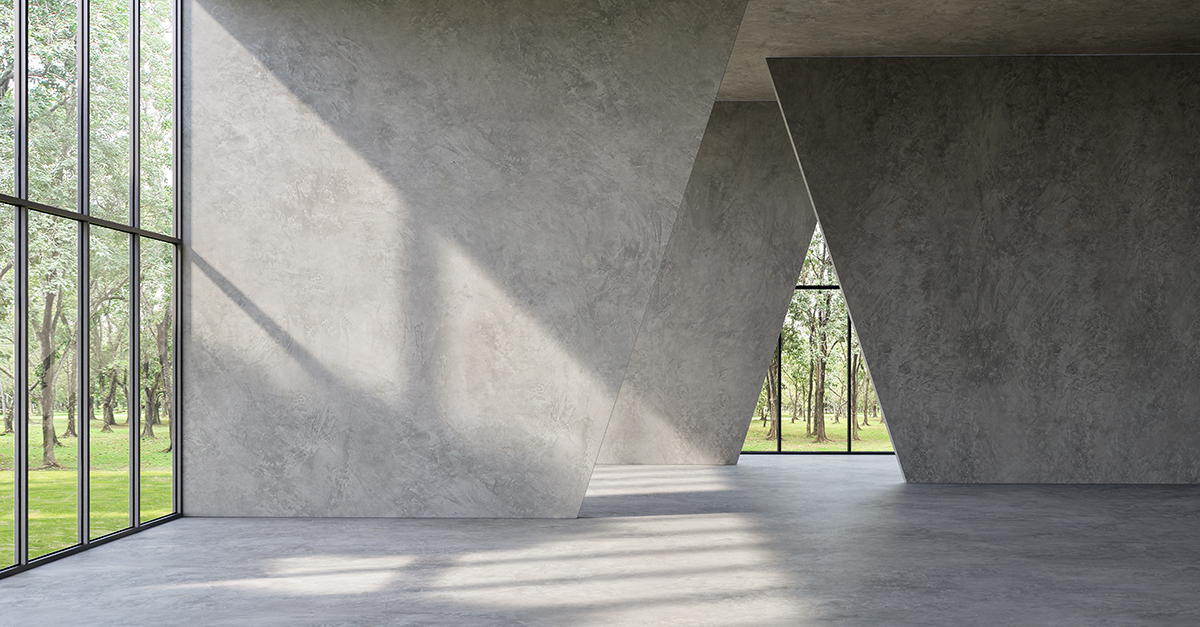Polished concrete floors have made recent gains in popularity due to their durability, aesthetic appeal, and sustainability. The North American concrete flooring market is expected to grow at a compound annual growth rate (CAGR) of 4.1% from 2023 to 2030, according to a report from Grand View Research.
With an increase in concrete flooring in commercial properties, it’s important to understand the intricacies of the polishing process, including the machinery, diamond abrasives, and chemical treatments involved in achieving different levels of gloss and clarity.
Surface preparation
Before the polishing begins, proper surface preparation is essential. Floor maintenance workers remove existing coatings, adhesives, and contaminants from the concrete surface through mechanical grinding, shot blasting, or chemical treatments. Surface preparation sets the foundation for a flawless finish by ensuring optimal adhesion and uniformity.
Grinding and leveling
Once the surface is prepared, the grinding process begins. Grinding machines equipped with diamond-impregnated segments or discs gradually grind down the concrete surface. Initially, maintenance workers use coarse-grit abrasives to level uneven areas and remove imperfections. As the process progresses, they introduce finer grits, refining the surface to achieve the desired smoothness and flatness.
Polishing
Polishing can take place once the surface is properly ground and leveled. Diamond abrasives play a pivotal role in this process, gradually refining the concrete surface to achieve a high level of shine. The polishing sequence typically involves multiple passes with increasingly finer grits of diamond abrasives, ranging from coarse to fine.
Chemical treatments
In addition to mechanical abrasion, floor maintenance workers often use chemical treatments to enhance polishing. Densifiers, for instance, penetrate the concrete matrix, filling pores and strengthening the surface, resulting in increased durability and abrasion resistance. Workers may apply stain repellents and guard products to protect the polished surface from spills and stains, prolonging its lifespan and maintaining its brilliance.
DOI levels
The level of distinctness-of-image (DOI) desired for a polished concrete floor can vary depending on the space’s aesthetic preferences and functional requirements. DOI testing measures have multiple sensors arranged to capture the distribution of reflected light across a broad angular range (plus or minus approximately seven degrees). The width and shape of the reflected light distribution give a measure of how surface imperfections scatter the incident light and, thus, how sharp a reflection appears. DOI indicates the clarity of a reflected image. The more scattering that occurs, the hazier and more blurred the reflection appears. By adjusting the combination of diamond abrasives, polishing speed, and chemical treatments, floor maintenance staff can achieve a spectrum of finishes, ranging from matte to high gloss.
When measuring the reflectivity of polished concrete flooring, it’s important to note that gloss meters only read surface light reflectivity in the form of gloss. The DOI scale combines readings
that are a true representation of the entire surface. DOI meters and the DOI scale define gloss as the sharpness of objects as a reflected image, and haze is considered a quantifiable measurement.
Routine floor care
Implementing a routine maintenance schedule that excludes topical surface treatments helps maintain the durability and DOI of a polished concrete floor. The use of penetrating surface treatments will not add haze or a false shine to the floor, but will still help increase stain resistance while achieving the desired DOI. With careful attention to detail and the right combination of tools and techniques, polished concrete floors can be beautiful and durable while enhancing sustainability, aesthetics, and functionality in various facility types.


